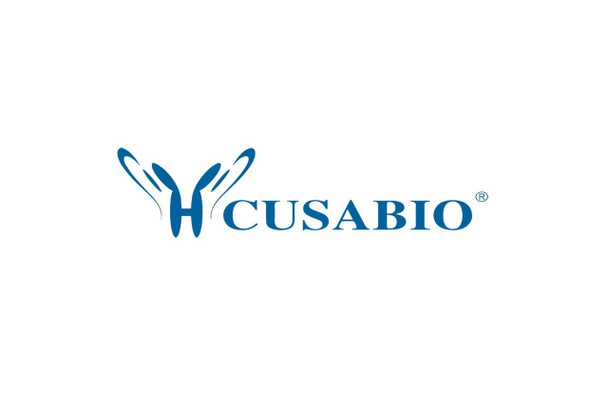Cusabio Human Recombinants
Recombinant Human PRKCA-binding protein (PICK1), partial | CSB-RP054454h
- SKU:
- CSB-RP054454h
- Availability:
- 13 - 23 Working Days
Description
Recombinant Human PRKCA-binding protein (PICK1), partial | CSB-RP054454h | Cusabio
Alternative Name(s): Protein interacting with C kinase 1;Protein kinase C-alpha-binding protein
Gene Names: PICK1
Research Areas: Signal Transduction
Organism: Homo sapiens (Human)
AA Sequence: MFADLDYDIEEDKLGIPTVPGKVTLQKDAQNLIGISIGGGAQYCPCLYIVQVFDNTPAALDGTVAAGDEITGVNGRSIKGKTKVEVAKMIQEVKGEVTIHYNKLQADPKQGMSLDIVLKKVKHRLVENMSSGTADALGLSRAILCNDGLVKRLEELERTAELYKGMTEHTKNLLRAFYELSQTHRAFGDVFSVIGVREPQ
Source: E.coli
Tag Info: N-terminal GST-tagged
Expression Region: 1-200aa
Sequence Info: Partial
MW: 48.9 kDa
Purity: Greater than 90% as determined by SDS-PAGE.
Relevance: Probable adapter protein that bind to and organize the subcellular localization of a variety of mbrane proteins containing some PDZ recognition sequence. Involved in the clustering of various receptors, possibly by acting at the receptor internalization level. Plays a role in synaptic plasticity by regulating the trafficking and internalization of AMPA receptors. May be regulated upon PRKCA activation. May regulate ASIC1/ASIC3 channel. Regulates actin polymerization by inhibiting the actin-nucleating activity of the Arp2/3 complex; the function is competetive with nucleation promoting factors and is linked to neuronal morphology regulation and AMPA receptor (AMPAR) endocytosis. Via interaction with the Arp2/3 complex involved in regulation of synaptic plasicity of excitatory synapses and required for spine shrinkage during long-term depression (LTD). Involved in regulation of astrocyte morphology, antagonistic to Arp2/3 complex activator WASL/N-WASP function.
Reference: Interaction of the PDZ domain of human PICK1 with class I ADP-ribosylation factors.Takeya R., Takeshige K., Sumimoto H.Biochem. Biophys. Res. Commun. 267:149-155(2000)
Storage: The shelf life is related to many factors, storage state, buffer ingredients, storage temperature and the stability of the protein itself. Generally, the shelf life of liquid form is 6 months at -20?/-80?. The shelf life of lyophilized form is 12 months at -20?/-80?.
Notes: Repeated freezing and thawing is not recommended. Store working aliquots at 4? for up to one week.
Function: Probable adapter protein that bind to and organize the subcellular localization of a variety of membrane proteins containing some PDZ recognition sequence. Involved in the clustering of various receptors, possibly by acting at the receptor internalization level. Plays a role in synaptic plasticity by regulating the trafficking and internalization of AMPA receptors. May be regulated upon PRKCA activation. May regulate ASIC1/ASIC3 channel. Regulates actin polymerization by inhibiting the actin-nucleating activity of the Arp2/3 complex; the function is competetive with nucleation promoting factors and is linked to neuronal morphology regulation and AMPA receptor (AMPAR) endocytosis. Via interaction with the Arp2/3 complex involved in regulation of synaptic plasicity of excitatory synapses and required for spine shrinkage during long-term depression (LTD). Involved in regulation of astrocyte morphology, antagonistic to Arp2/3 complex activator WASL/N-WASP function.
Involvement in disease:
Subcellular Location: Cytoplasm, perinuclear region, Membrane, Peripheral membrane protein, Membrane, Lipid-anchor, Cell junction, synapse, postsynaptic cell membrane, postsynaptic density, Cell junction, synapse, synaptosome, Cytoplasm, cytoskeleton
Protein Families:
Tissue Specificity: Ubiquitous.
Paythway:
Form: Liquid or Lyophilized powder
Buffer: If the delivery form is liquid, the default storage buffer is Tris/PBS-based buffer, 5%-50% glycerol. If the delivery form is lyophilized powder, the buffer before lyophilization is Tris/PBS-based buffer, 6% Trehalose, pH 8.0.
Reconstitution: We recommend that this vial be briefly centrifuged prior to opening to bring the contents to the bottom. Please reconstitute protein in deionized sterile water to a concentration of 0.1-1.0 mg/mL.We recommend to add 5-50% of glycerol (final concentration) and aliquot for long-term storage at -20?/-80?. Our default final concentration of glycerol is 50%. Customers could use it as reference.
Uniprot ID: Q9NRD5
HGNC Database Link: HGNC
UniGene Database Link: UniGene
KEGG Database Link: KEGG
STRING Database Link: STRING
OMIM Database Link: OMIM









